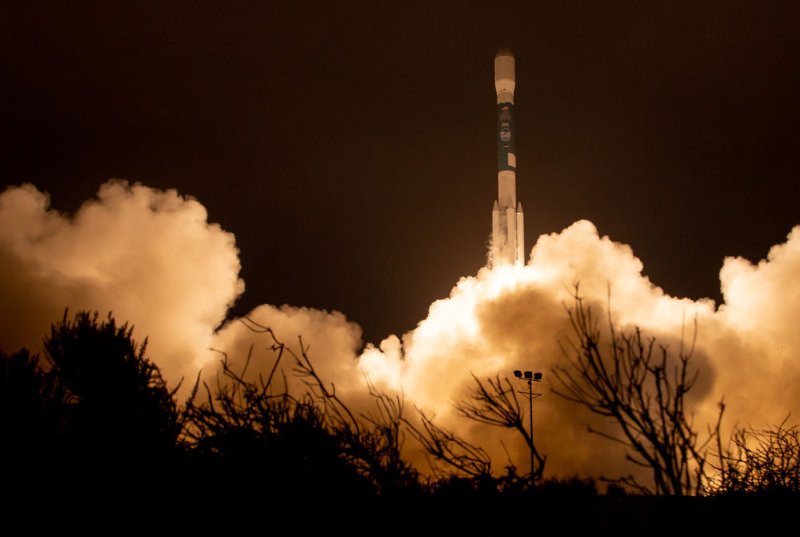A propellant-free rocket engine would be more energy efficient. File Photo by Bill Ingalls/NASA |
License Photo
Sept. 26 (UPI) -- Physicist Mike McCulloch plans to use a $1.3 million grant from the federal agency DARPA to prove his quantized inertia theory is more than just a spark plug for heady debates on online physics forums.
McCulloch believes his ideas about quantized inertia and Unruh radiation can inspire the creation of a rocket engine that turns light into thrust without the assistance of a chemical propellant.
Engineers at DARPA, the Defense Advanced Research Projects Agency, think McCulloch might be onto something.
"There is increasing global activity in space," Mike Fiddy, program manager for the Nascent Light-Matter Interactions program in DARPA's Defense Sciences Office, told UPI. "DARPA is seeking to deepen our understanding of how to move objects around in more energy efficient and versatile ways."
McCulloch thinks imbalances in Unruh radiation can be used to generate a more energy efficient thrust.
"Uhler radiation is a kind of radiation that you see when you accelerate," McCulloch, a professor of physics at the University of Plymouth in England, told UPI. "When you accelerate, a horizon radiation appears behind you, and the radiation emanates from this horizon the way Hawking radiation is emitted by the horizon of a black hole."
"One definition of quantized inertia is that the force we know as inertia is caused by a gradient in this Uhler radiation," he said.
In previously published papers, McCulloch has used his quantized inertia theory to explain galaxy rotation without the presence of dark matter, as well as the thrust achieved by the EmDrive.
The EmDrive was NASA's attempt at developing a propellant-less rocket engine.
According to the EmDrive's inventors, the engine musters up a bit of thrust by bouncing microwaves from one end to the other of an unevenly-shaped container, creating a difference in radiation pressure and generating drive -- although a study earlier this year questioned whether it worked at all.
"I believe that the EmDrive is a manifestation of quantized inertia," McCulloch said.
He said a different set of experiments may produce more powerful QI-powered thrusts.
Before the DARPA grant, announced this month, is used to build experiments, it will fund more theorizing.
"The first thing the money will allow me to do is hire a postdoc," McCulloch said.
With the help of a postdoctoral researcher, McCulloch plans on building out and filling in his quantized inertia theory.
"We're going to try to develop a numerical model to make the theory fully predictive," he said.
After 18 months of theory-building, the grant will help fund experimental teams in Germany and Spain, which will build a pair of thrust-producing experiments.
"One such experiment is a shielded laser loop, and another uses asymmetrical mirrors and laser light," McCulloch said.
If the experiments succeed, as predicted by McCulloch's theory, researchers will look for ways to enhance the thrusts.
Throughout the different phases of research, McColloch hopes to continue to use his ideas to explain and understand observable astronomical data.
"I think that the strength of the theory is that it explains a lot of things on different scales -- both at the cosmological level and the level of the laboratory," he said.
McCulloch's theory purports to explain cosmological phenomena more accurately than the Standard Model, which relies on the existence of dark matter. Coincidentally or not, he's faced pushback from some physicists.
"I have gotten a lot of resistance from people who believe in dark matter," McCulloch said. "They don't like it at all, as many scientists and universities receive a lot of money to build expensive machines looking for the stuff."
But even if mainstream physicists are reluctant to engage with McCulloch's ideas, DARPA was interested enough to open the coffers. They might be willing to do so again, should the right idea come along.
"The broad interest in understanding more about how electromagnetic waves and matter interact will continue to stimulate new hypotheses and theories," Fiddy said. "When these new ideas are relevant to DARPA's mission and are testable, the agency may well support them."















